Microsoft 70-778 Analyzing and Visualizing Data with Microsoft Power BI Online Training
Microsoft 70-778 Online Training
The questions for 70-778 were last updated at Dec 14,2025.
- Exam Code: 70-778
- Exam Name: Analyzing and Visualizing Data with Microsoft Power BI
- Certification Provider: Microsoft
- Latest update: Dec 14,2025
HOTSPOT
You have a query that retrieves data from a Microsoft Azure SQL database.
You discover that column named ErrorCode has several values starting with a space character, and a column named SubStatus contains several non-printable characters.
You need to remove all the leading whitespaces from ErrorCode and all the non-printable characters from SubStatus. All other data must be retained.
What should you do on each column? To answer, drag the appropriate tasks to the correct columns. Each task may be used once, more than once, or not at all. You may need to drag the split bar between panes or scroll to view content.
NOTE: Each correct selection is worth one point.
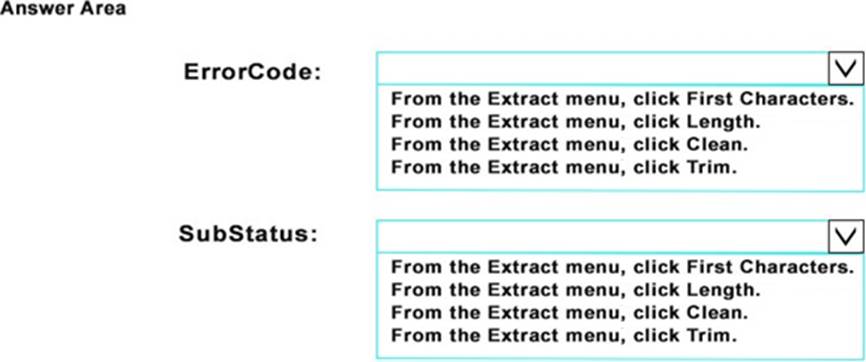
You have a Microsoft SharePoint Online site named Sales.
Your company has 1,000 sales users. All the sales users can access Sales.
You create a report in an app workspace in the Power BI service. You embed the report into a page on the Sales site by using the Power BI web part.
You need to ensure that all the sales can view the report from the Sales site.
What should you do?
- A . Configure the app workspace for Premium capacity.
- B . Enable anonymous access for the Sales site.
- C . Configure the Portal Site Connection for the Sales site.
- D . Disable the Embed content in apps setting from the Tenant settings in Power BI.
You plan to use Power BI Embedded to deliver reports in a web application.
You need to ensure that the reports display live data.
Which data source you should use?
- A . Microsoft Azure Data Lake Store
- B . Microsoft Azure Table Storage
- C . Microsoft Azure HDInsight
- D . Microsoft Azure SQL Database
You have a table named Sales.
A sample of the data in Sales is shown
in the following table.
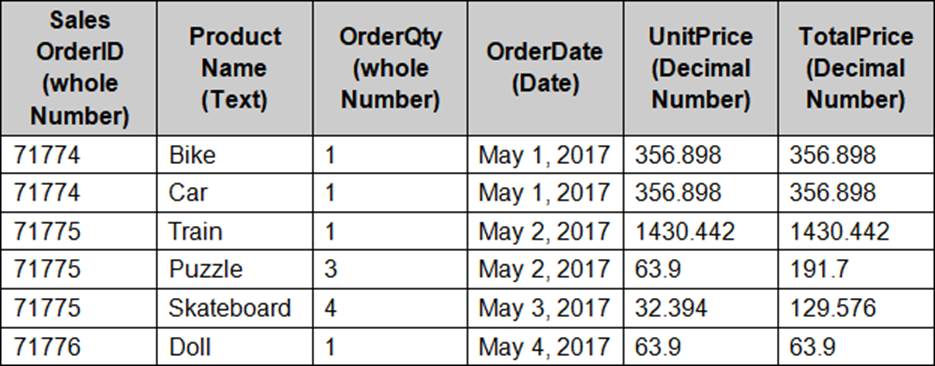
You created a stacked column chart visualization that displays ProductName by Date.
You discover that the axis for the visualization displays all the individual dates.
You need to ensure that the visualization displays ProductName by year and that you can drill down to see ProductName by week and day.
What should you do first?
- A . Configure a visual filter for the Date column that uses an advanced filter.
- B . Create a new table that has columns for the date, year, week, and day.
- C . Create a new hierarchy in the Sales table.
- D . Format the virtualization and set the type of the X-Axis to Categorical.
You plan to create a Power BI report.
You have the schema model shown in the exhibit. (Click the exhibit).
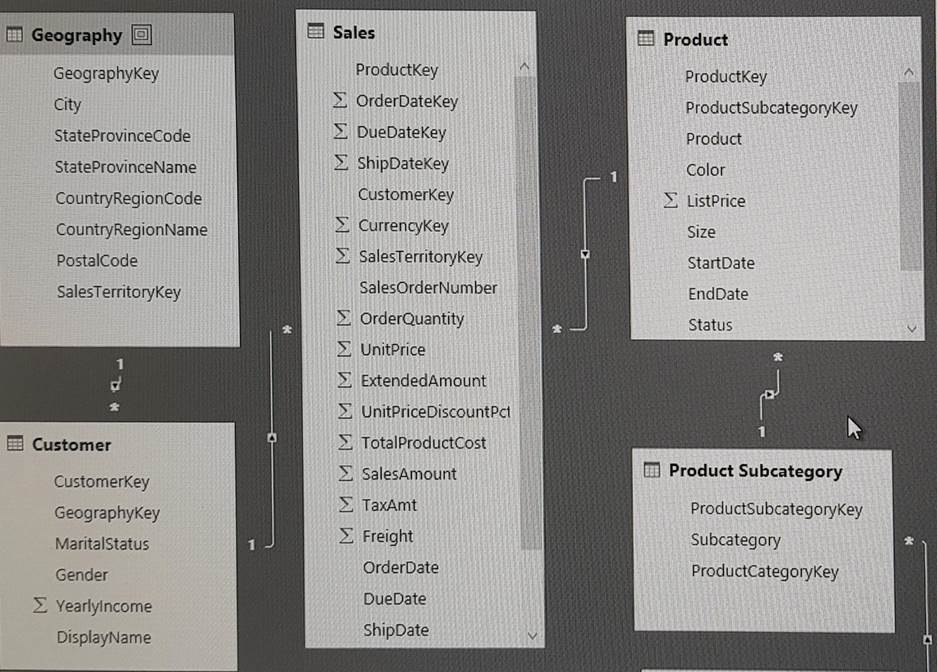
The model has the following relationships:
– Store the District based on DistrictID
– Sales to Store based on LocationID
– Sales to Date based on PeriodID
– Sales to Item based on ItemID
You configure row-level security (RLS) so that the district managers of the stores only see the sales from the stores they manage.
When the district managers view the sales report, they see Sales by Items for all stores.
You need to ensure that the district managers can see Sales by items for the stores they manage only.
How should you configure the relationship from Sales to Item?
- A . Change the Cardinality to One to one (1:1).
- B . Change the Cardinality to One to Many (1.*).
- C . Select Assume Referential Integrity.
- D . Change the Cross filter direction to Both.
You have a Microsoft Excel 2016 workbook that has a Power Pivot model.
The model contains the following tables:
– Product (Product_id, Producct_Name)
– Sales (Order_id, Order_Date, Product_id, Selasperson_id, Sales_Amount)
– Salesperson (Salesperson_id, Salesperson_name, address)
The model has the following relationships:
– Sales to Product
– Sales to Salesperson
You create a new Power BI file and import the Power Pivot model.
You need to ensure that you can generate a report that displays the count of products sold by each salesperson.
What should you do before you create the report?
- A . Create a many-to-one relationship between Product and Salesperson.
- B . For each relashionship, change the Cardinality to One to One (1:1).
- C . Create a one-to-one relashionship between Product and Salesporson.
- D . For each relationship, change the Cross filter direction to Both.
You have a Power BI report that displays a bar chart and a donut chart on the same page. The bar chart shows the total sales by year and the donut chart shows the total sale by category.
You need to ensure that when you select a year on the bar chart, the donut remains unchanged.
What should you do?
- A . Set a visual level filter on the bar chart.
- B . Edit the interactions form the Format menu.
- C . Set a visual level filter on the donut chart.
- D . Add a slicer to the page that uses the year column.
You have a Power BI model that contains the following tables:
– Sales (Sales_ID, DateID, sales_amount)
– Date (DateID, Date, Month, week, Year)
The tables have a relationship. Date is marked as a date table in the Power BI model.
You need to create a measure to calculate the sales for the last 12 months.
Which DAX formula should you use?
- A . CALCULATEx(SUM(sales[sales_amount]) DATESYTD (‘Date’ [Date]))
- B . CALCULATE(SUM(sales[sales_amount]), SAMEPERIODLASTYEAR (‘Date’ [Date]))
- C . SUM(sales[sales_amount])-CALCULATE(SUM(sales[sales_amount]), SAMEPERIODLASTYEAR(‘Date’[Date]))
- D . SUM(sales[sales_amount])-CALCULATE(SUM(sales[sales_amount]),DATESYTD(‘Date’[Date]))
DRAG DROP
You have a Power BI model that contains a table named Sales. Sales contains columns named SalesAmount, OrderDate, SalesPerson, and OrderID.
You need to create a measure to calculate the last 12 months of sales. You must start from the last date a sale was made and ignore any filters set on the report.
How should you complete the DAX formula? To answer, drag the appropriate values to the correct targets. Each value may be used once, more than once, or not at all. You may need to drag the split bar between panes or scroll to view content.
NOTE: Each correct selection is worth one point.
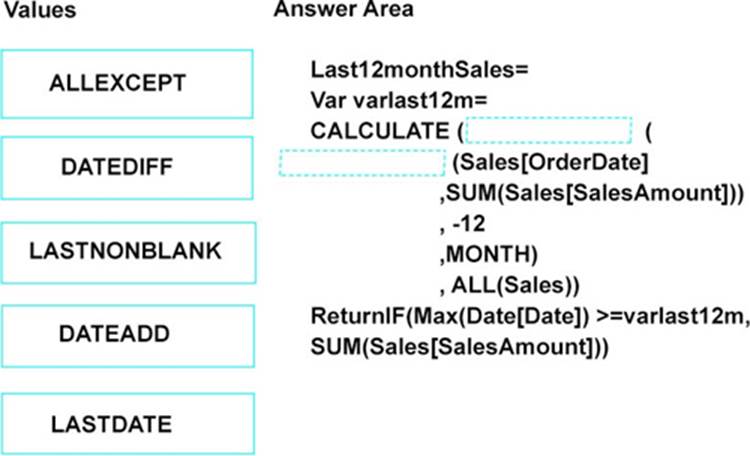
You have two tables named CustomerVisits and Date in a Power BI model.
You create a measure to calculate the number of customer visits.
You use the measure in the report shown in the exhibit. (Click the Exhibit.)
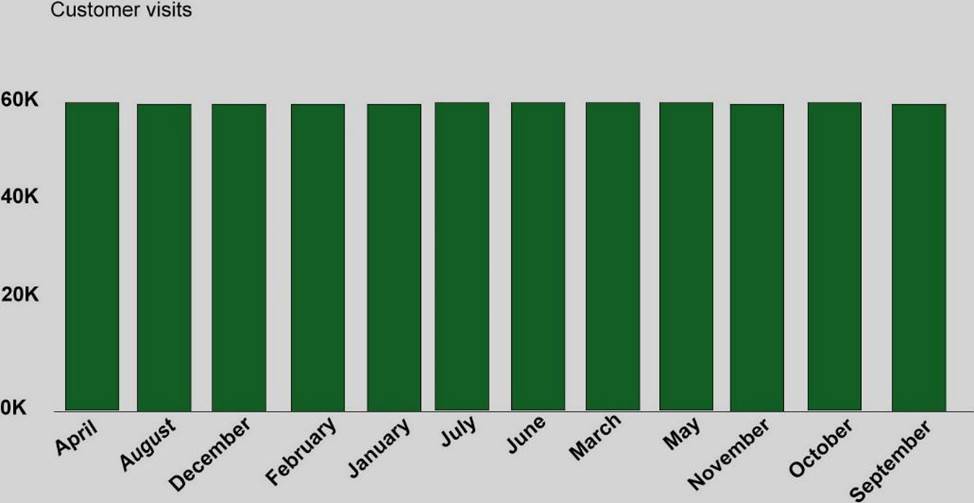
You discover that the total number of customer visits was 60,000, and that there were only 5,000 customer visits in August.
You need to fix the report to display the correct data for each month.
What should you do?
- A . Create a relationship between the CustomerVisits table and the Date table.
- B . Create a hierarchy in the Date table.
- C . Modify the n=measure to use the CALCULATE DAX function.
- D . Modify the measure to use the SUM DAX function.
Latest 70-778 Dumps Valid Version with 147 Q&As
Latest And Valid Q&A | Instant Download | Once Fail, Full Refund

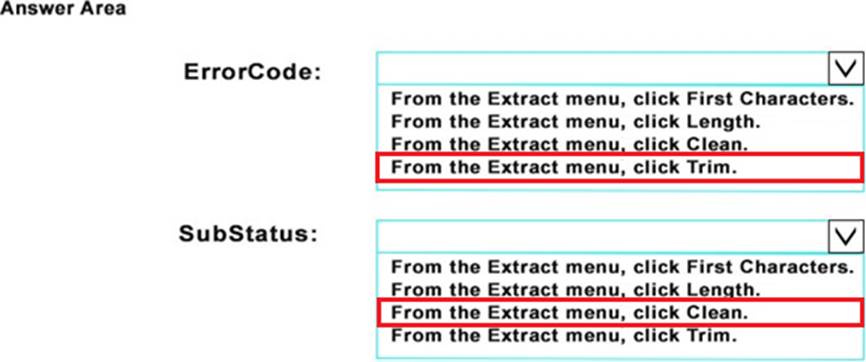
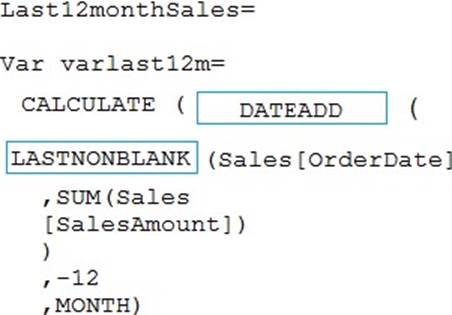

I believe there are several wrong answers in this